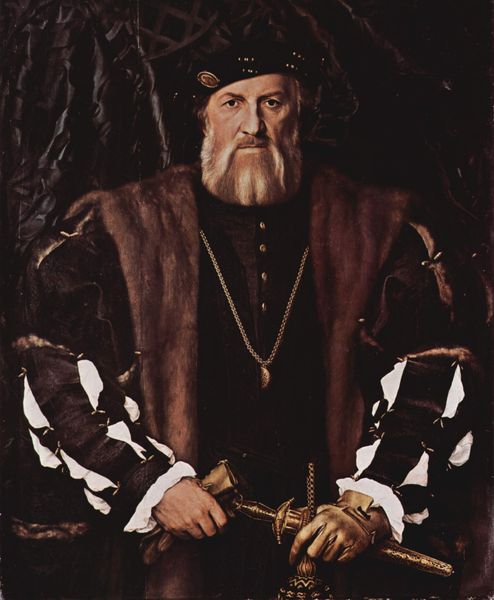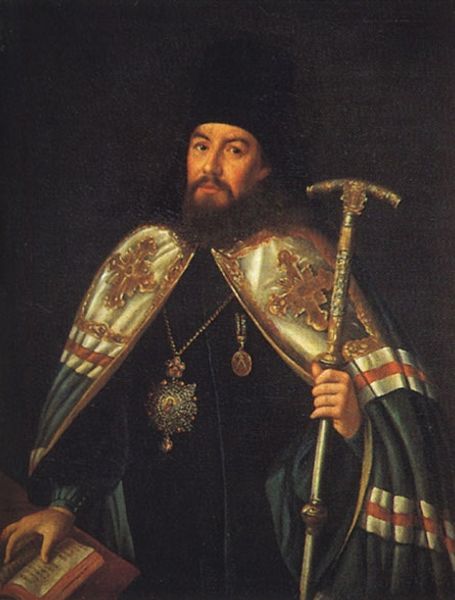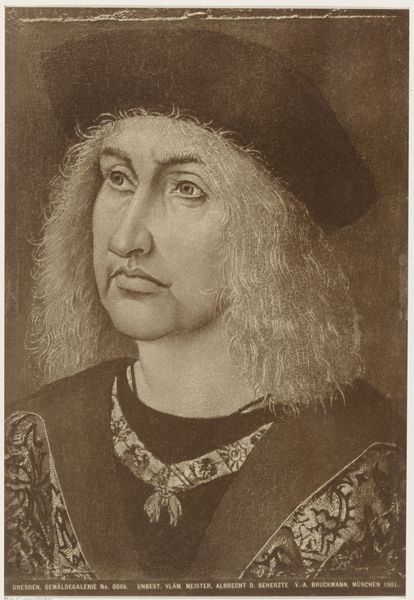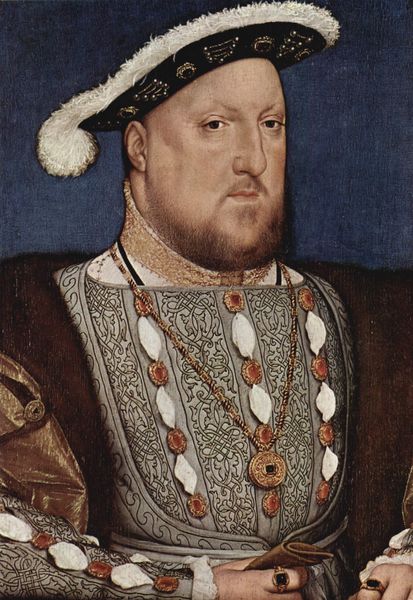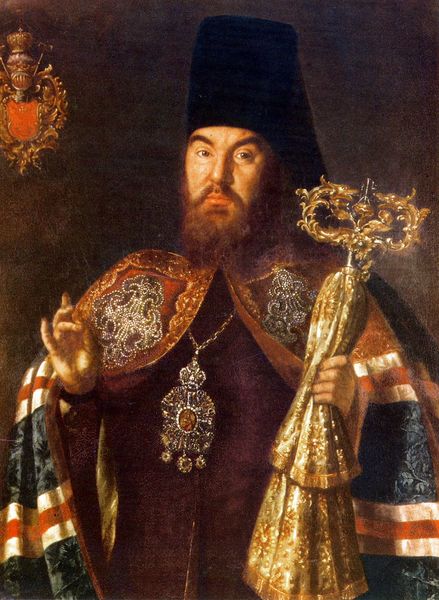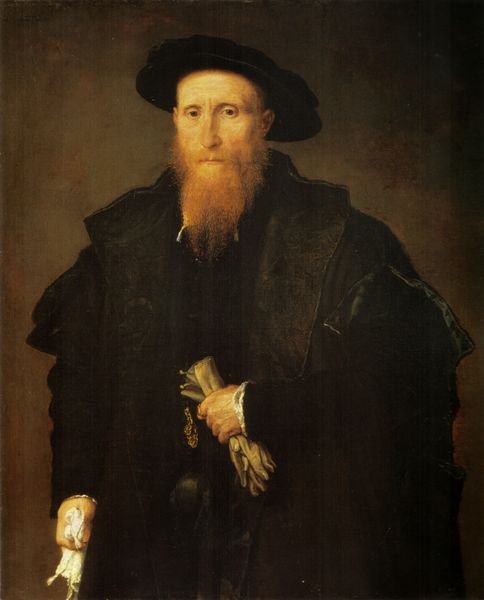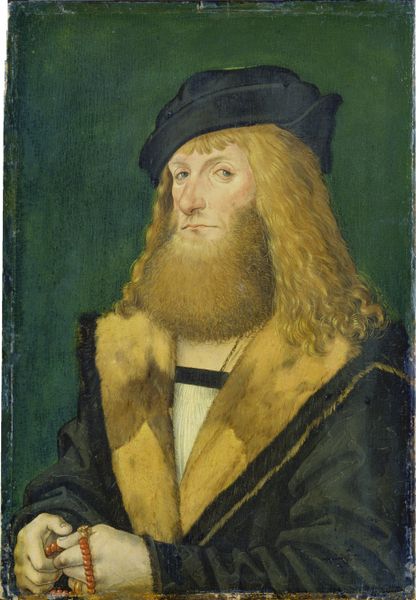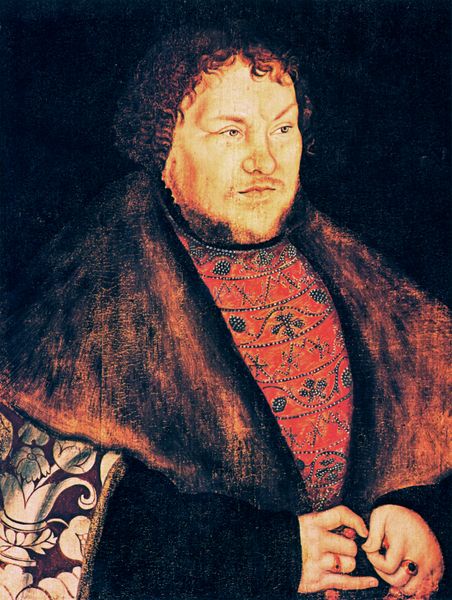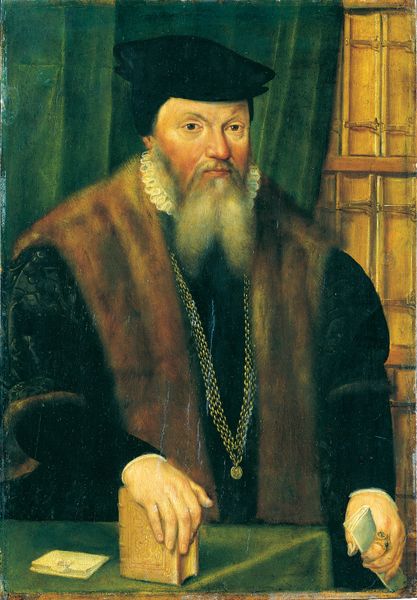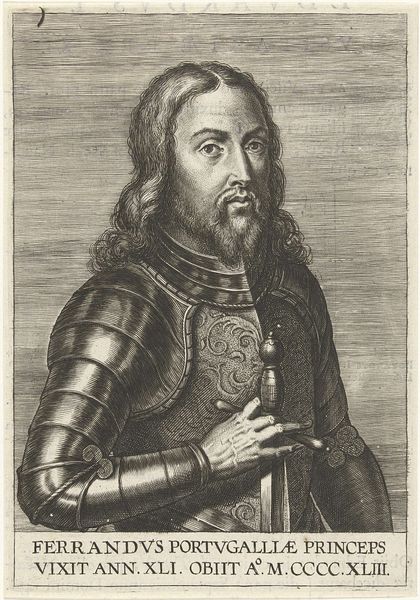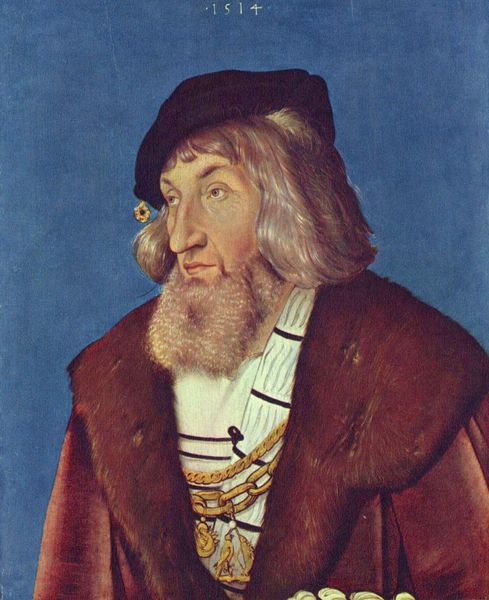
Copyright: Public domain
Editor: So, this is Bernhard Strigel's "Hans Caspar von Laubberg," painted in 1509, using oil paints. It feels like a very stately portrait. What stands out to you when you look at this piece? Curator: Immediately, the opulent materiality declares itself. Consider the sourcing of pigments. The intense red – likely from precious minerals, signaling wealth through global trade networks. The gold chain isn't just decoration, it's materialized value, laboriously crafted and visually asserting the subject’s position within a system of exchange. Where do you think those materials came from? Editor: That's interesting. I hadn't considered where the pigments came from. Probably some faraway land, then right? Curator: Precisely. Now look at the fur trim on the coat. Fur was not just about warmth; its acquisition and preparation represented specific forms of labor and access to hunting grounds controlled by the elite. The way Strigel meticulously renders these textures – the gleam of gold, the pile of the fur, speaks to an appreciation, even fetishization, of commodities. The very act of painting on an oil panel transforms raw materials into something more—something of status and worth. What does the sitter's clothing communicate to you? Editor: I suppose, I see all of it is saying something about wealth, access to resources, but maybe I wouldn't have focused on the labour and access that enabled it. It gives new meaning to the traditional finery we are used to associate with Renaissance portraiture. Thanks, it was helpful! Curator: It is about understanding how these objects weren't simply beautiful things. Their value extends beyond aesthetics; it is deeply intertwined with social systems and labor. Food for thought.
Comments
No comments
Be the first to comment and join the conversation on the ultimate creative platform.
